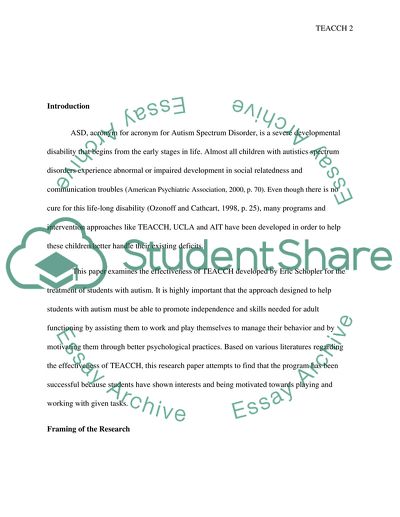Cite this document
(The Effectiveness of the TEACCH Approach as a Treatment Intervention Term Paper, n.d.)
The Effectiveness of the TEACCH Approach as a Treatment Intervention Term Paper. Retrieved from https://studentshare.org/health-sciences-medicine/1741366-the-effectiveness-of-the-teacch-approach-as-a-treatment-intervention-for-pupils-with-asds-autistic-spectrum-disorders-in-the-primary-classroom
The Effectiveness of the TEACCH Approach as a Treatment Intervention Term Paper. Retrieved from https://studentshare.org/health-sciences-medicine/1741366-the-effectiveness-of-the-teacch-approach-as-a-treatment-intervention-for-pupils-with-asds-autistic-spectrum-disorders-in-the-primary-classroom
(The Effectiveness of the TEACCH Approach As a Treatment Intervention Term Paper)
The Effectiveness of the TEACCH Approach As a Treatment Intervention Term Paper. https://studentshare.org/health-sciences-medicine/1741366-the-effectiveness-of-the-teacch-approach-as-a-treatment-intervention-for-pupils-with-asds-autistic-spectrum-disorders-in-the-primary-classroom.
The Effectiveness of the TEACCH Approach As a Treatment Intervention Term Paper. https://studentshare.org/health-sciences-medicine/1741366-the-effectiveness-of-the-teacch-approach-as-a-treatment-intervention-for-pupils-with-asds-autistic-spectrum-disorders-in-the-primary-classroom.
“The Effectiveness of the TEACCH Approach As a Treatment Intervention Term Paper”, n.d. https://studentshare.org/health-sciences-medicine/1741366-the-effectiveness-of-the-teacch-approach-as-a-treatment-intervention-for-pupils-with-asds-autistic-spectrum-disorders-in-the-primary-classroom.


